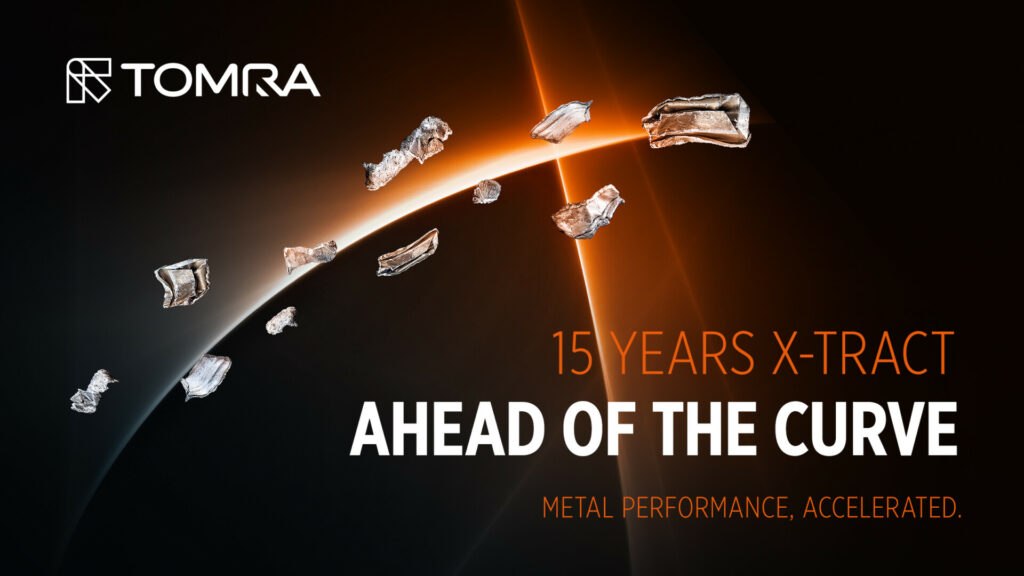TOMRA’s ambition to be a leader in the resource revolution is a long-standing commitment. The company strives to improve the environmental performance of the aluminum industry through automated sensor-based sorting solutions. As a trailblazer in dual-energy XRT technology with an impressive legacy in metal, mineral, and diamond sorting, TOMRA proves once again that its legendary performance continues to advance the production of green, recycled aluminum.
X-TRACT has harnessed the power of dual-energy x-ray transmission with high resolution and high sensitivity sensors for the aluminum market since 2007. As demand for aluminum continued to grow in transport and building sectors that year, the amount of aluminum produced from scrap globally had grown from 1 million metric tons in 1980 to 8 million metric tons. According to the International Aluminium Institute (IAI), refiners and re-melters also played instrumental roles in meeting demand in 2007 – they produced close to 18 million metric tons of recycled aluminum from old and traded new scrap, including ingots for casting, rolling, and extrusion. Today, more than 30 million tonnes of aluminum scrap are recycled globally every year. European Aluminium projects a 40 percent increase in demand in Europe by 2050, and the potential to meet 50 percent of this demand with recycled, post-consumer aluminum.
Robust design that stands the test of time
Built for high-performance separation of aluminum from heavy metals based on density detection, X-TRACT features market-leading innovations for unparallel image sharpness and faster integration times. Its unrivaled performance is thanks to its built-in software intelligence and field-proven design.
X-TRACT’s robust construction also includes a top-mounted x-ray source that protects it from dirt, preventing costly maintenance and extending the machine’s lifetime. Matthias Winkler, Product Manager at TOMRA explains: “Our machine concept was built from the ground up with an extra focus on performance longevity. We offer a variety of sensor, valve, and even x-ray power options to maximize throughput and minimize product loss.”
Depending on the application, X-TRACT comes with an optional x-ray power supply up to 1000W for high throughput processing of multiple materials and grain sizes, including 5 – 40 mm aluminum fines and copper wires. The machine’s software-based Dual Processing Technology offers simultaneous object and area processing of adjacent and overlapping objects, therefore eliminating the need for additional sensors.
Limitless potential with in-house development
X-TRACT delivers a unique density detection with unsurpassed sorting accuracy and throughput, largely thanks to its sensors and software being developed in-house by TOMRA. Unlike other XRT solutions that rely on third-party development, TOMRA’s data-driven technology is synchronized and engineered to process primary and secondary raw materials.
Thomas Erdmann, Technical Manager, remarks: “Our team of software developers, designers, and engineers work together to continually improve performance. Every aspect of the machine and its software is optimized for the highest sorting accuracy and purity possible.” The TOMRA-developed software has enabled the X-TRACT FINES unit to consistently achieve 98 – 99% purity levels in high throughput applications. “The aluminum industry is transforming, and smelters are demanding high-grade secondary aluminum. TOMRA’s high precision sensors and software intelligence help scrap recyclers and processors get ahead of the curve,” adds Winkler.
As a global leader in aluminum recycling and processing, TOMRA understands and proactively responds to industry trends. When the automotive industry tightened controls on excessive magnesium and impurities in alloys, TOMRA’s team of in-house experts developed a software enhancement in 2020 to improve the separation of magnesium to create furnace-ready products. Magnesium removal from zorba and twitch plays a pivotal role in enabling domestic secondary aluminum smelting and reducing C02 emissions.

Decarbonizing aluminum recycling
Recycled aluminum can be produced with less than 5% of the carbon footprint of primary aluminum. In Cisterna di Latina in Italy, the green billet foundry Indinvest LT purchases post-consumer aluminum scrap from Centro Rottami. After introducing X-TRACT technology at Centro Rottami, Indinvest LT has been able to more than double the amount of recycled content from 20% to between 40 and 50% thanks to the purity levels provided by X-TRACT.
Roberto Antichi, President of Indinvest LT, added: “Using the clean material from X-TRACT, we have far fewer pollutants and don’t need to clean the furnace as frequently. Cleaning the furnace involves opening the door and dropping the temperature from 1100 degrees to 800 or 900 degrees. Getting it back to 1100 degrees requires time, gas, and electricity.”
With strategies like the The European Circular Aluminium Action Plan setting a clear path towards higher recycling rates and more post-consumer aluminum used in production, scrap metal operators and smelters alike significantly benefit from X-TRACT technology.
























